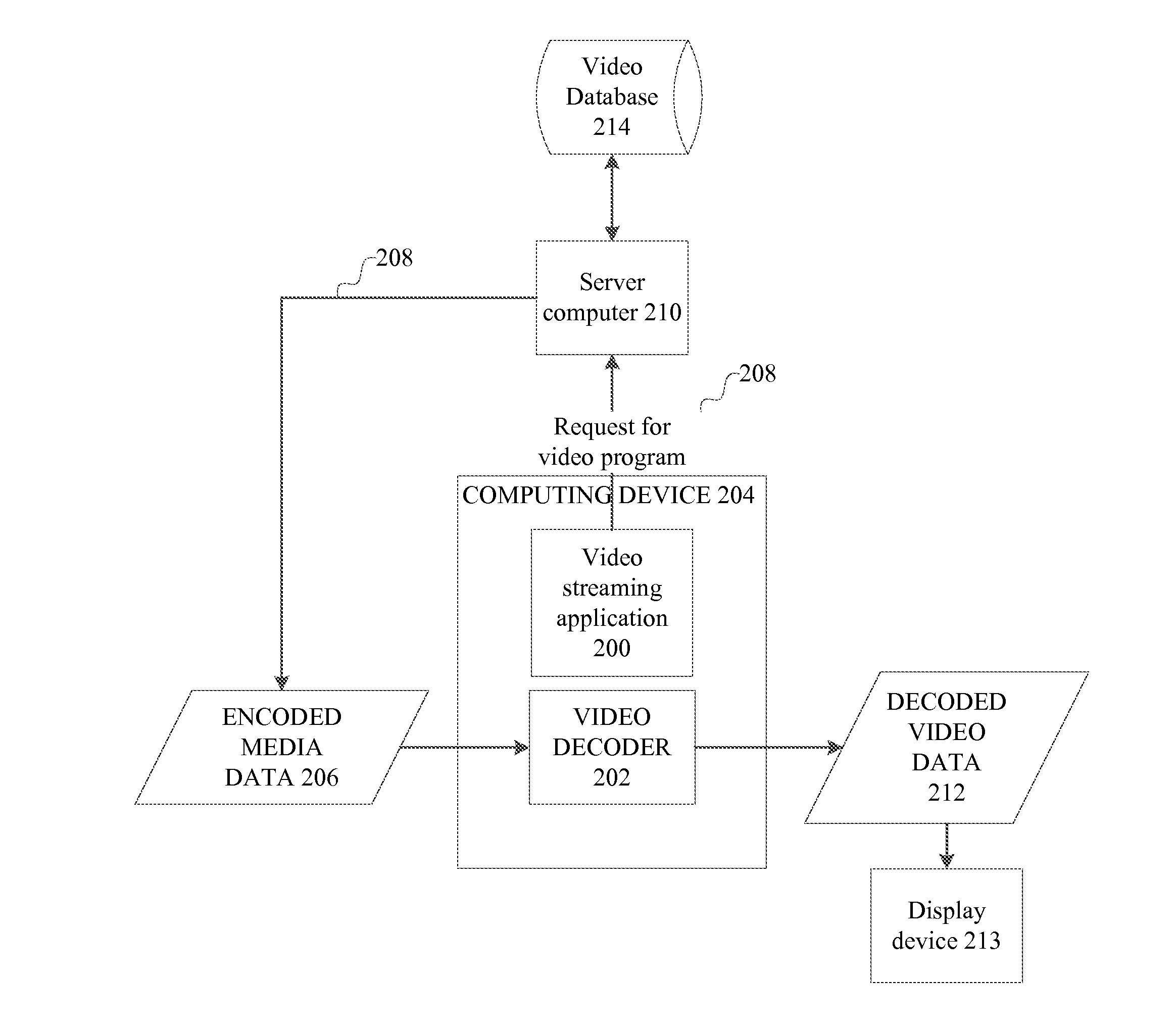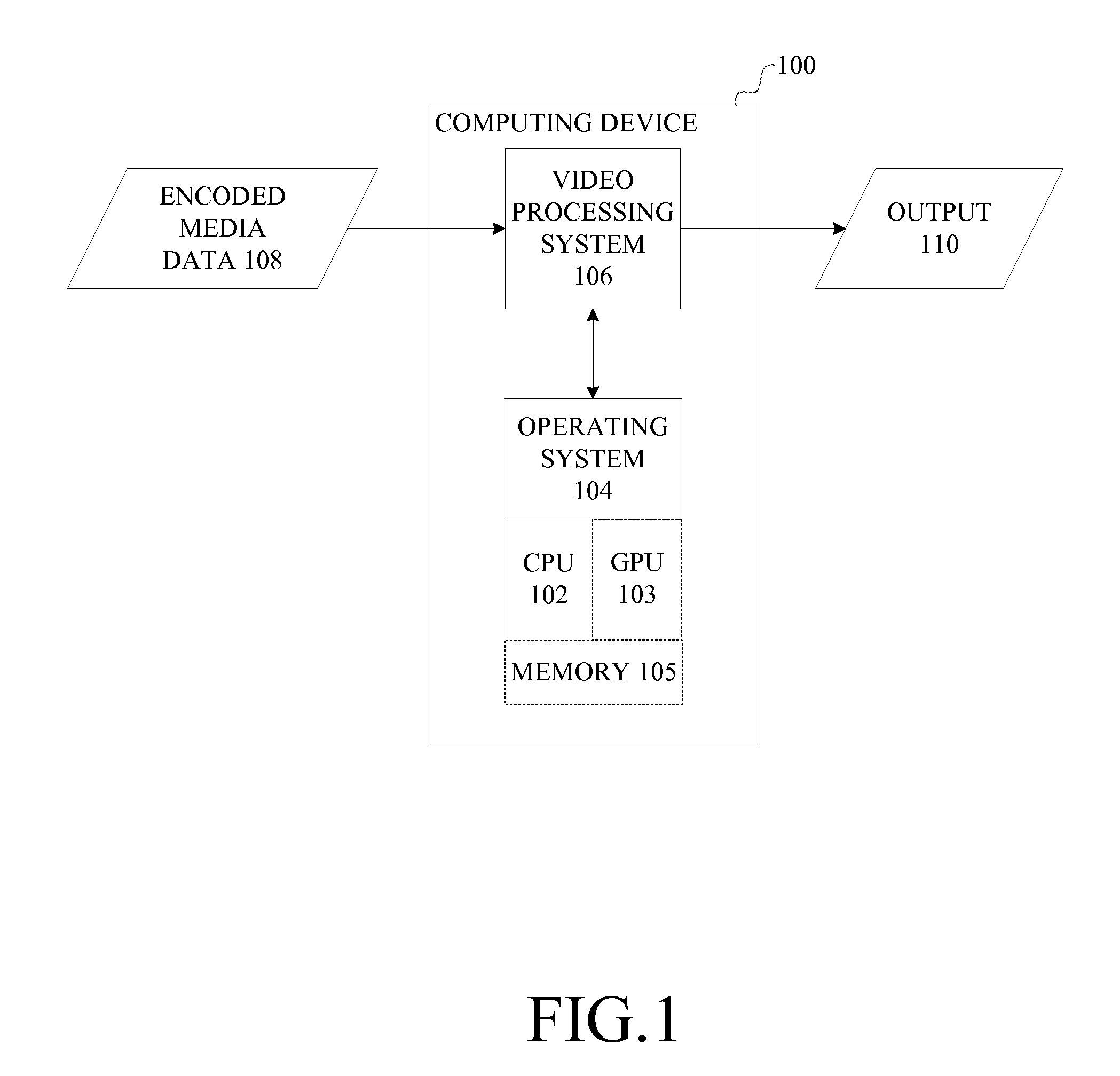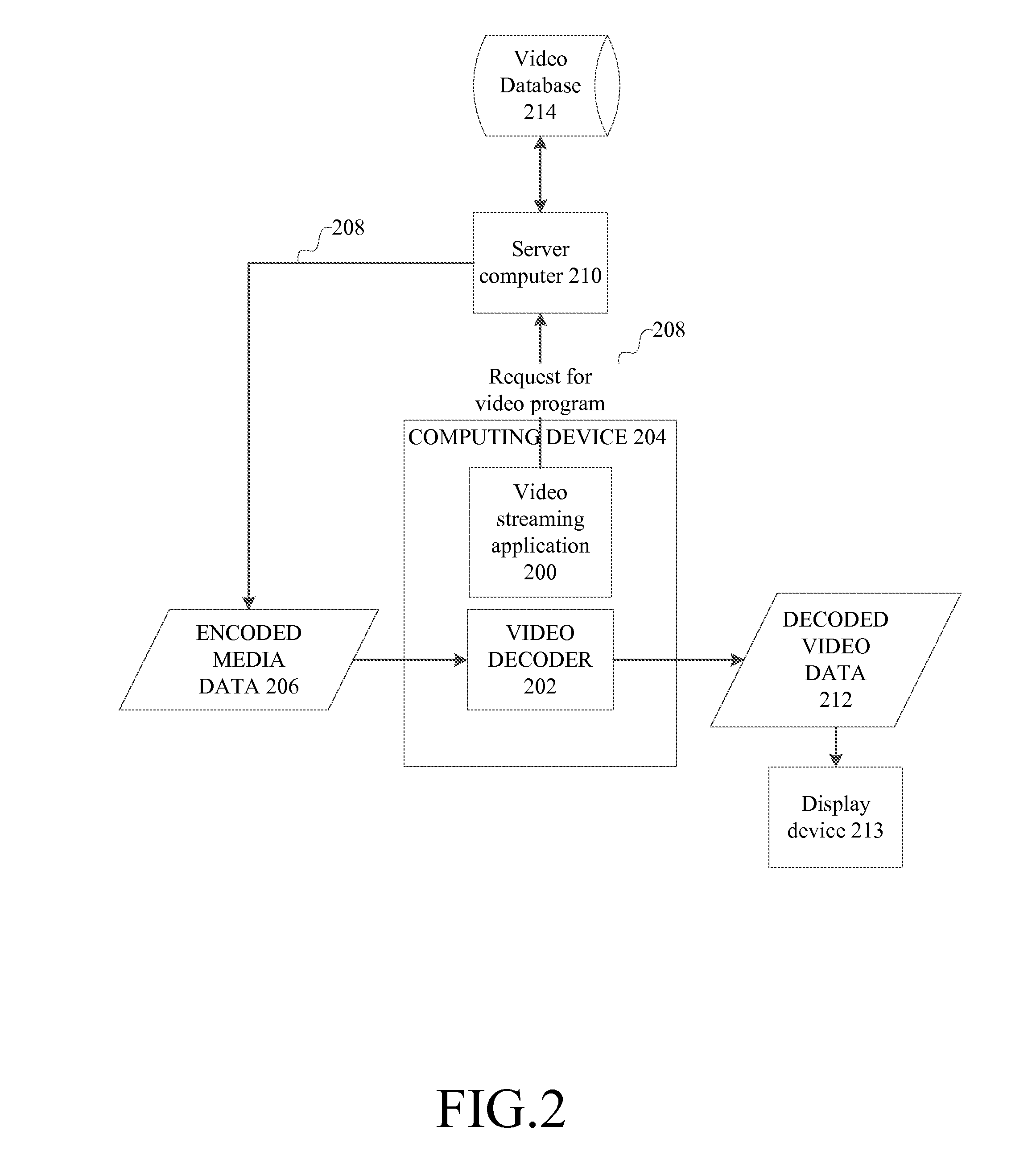Multiple Bit Rate Video Decoding
a video decoding and bit rate technology, applied in the field of multi-bit rate video decoding, can solve the problems of additional latency and significant latency in producing the first few output images, and achieve the effects of reducing interframe redundancy, significant latency, and reducing memory utilization
- Summary
- Abstract
- Description
- Claims
- Application Information
AI Technical Summary
Benefits of technology
Problems solved by technology
Method used
Image
Examples
Embodiment Construction
[0014]The following section describes example implementations for decoding video data which was encoded at multiple bit rates using multiple different sets of encoding factors.
[0015]Referring to FIG. 1, a computing device 100 includes a video processing system 106 which includes a video decoder. In one implementation, the video processing system 106 can be implemented by using a computer program executed on the computing device 100, where the computer program configures the computing device 100 to perform the functions of, and configure memory and other resources used by, the video processing system 106. The computing device 100 generally comprises at least one central processing unit 102, optionally one or more graphics processing units 103 or other processing logic, memory 105, and an operating system 104. An example computing device is described in more detail below in connection with FIG. 6.
[0016]In this example, the video processing system 106 can be implemented using an applic...
PUM
 Login to View More
Login to View More Abstract
Description
Claims
Application Information
 Login to View More
Login to View More - R&D
- Intellectual Property
- Life Sciences
- Materials
- Tech Scout
- Unparalleled Data Quality
- Higher Quality Content
- 60% Fewer Hallucinations
Browse by: Latest US Patents, China's latest patents, Technical Efficacy Thesaurus, Application Domain, Technology Topic, Popular Technical Reports.
© 2025 PatSnap. All rights reserved.Legal|Privacy policy|Modern Slavery Act Transparency Statement|Sitemap|About US| Contact US: help@patsnap.com



